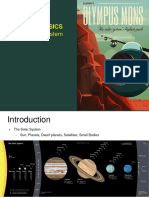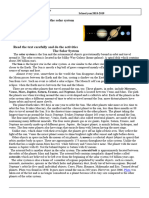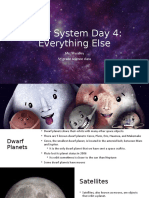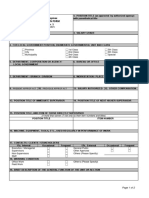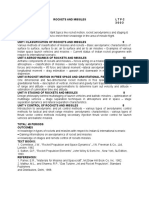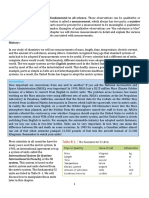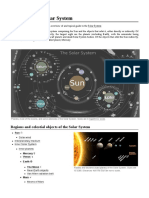0% found this document useful (0 votes)
245 views10 pagesEALS Chapter 1 - Module 5 PDF
1. The document discusses recent advancements in understanding the solar system based on robotic spacecraft missions.
2. It mentions that all planets have now been visited by spacecraft, providing close-up photos. Landers have also performed tests on soils and atmospheres of some planets.
3. The text then focuses on specific topics like the status of Pluto as a dwarf planet, the possibility of a Planet X, the presence of liquid on Titan, and ongoing Mars exploration missions.
Uploaded by
Ryan NegadCopyright
© © All Rights Reserved
We take content rights seriously. If you suspect this is your content, claim it here.
Available Formats
Download as PDF, TXT or read online on Scribd
0% found this document useful (0 votes)
245 views10 pagesEALS Chapter 1 - Module 5 PDF
1. The document discusses recent advancements in understanding the solar system based on robotic spacecraft missions.
2. It mentions that all planets have now been visited by spacecraft, providing close-up photos. Landers have also performed tests on soils and atmospheres of some planets.
3. The text then focuses on specific topics like the status of Pluto as a dwarf planet, the possibility of a Planet X, the presence of liquid on Titan, and ongoing Mars exploration missions.
Uploaded by
Ryan NegadCopyright
© © All Rights Reserved
We take content rights seriously. If you suspect this is your content, claim it here.
Available Formats
Download as PDF, TXT or read online on Scribd
/ 10






















